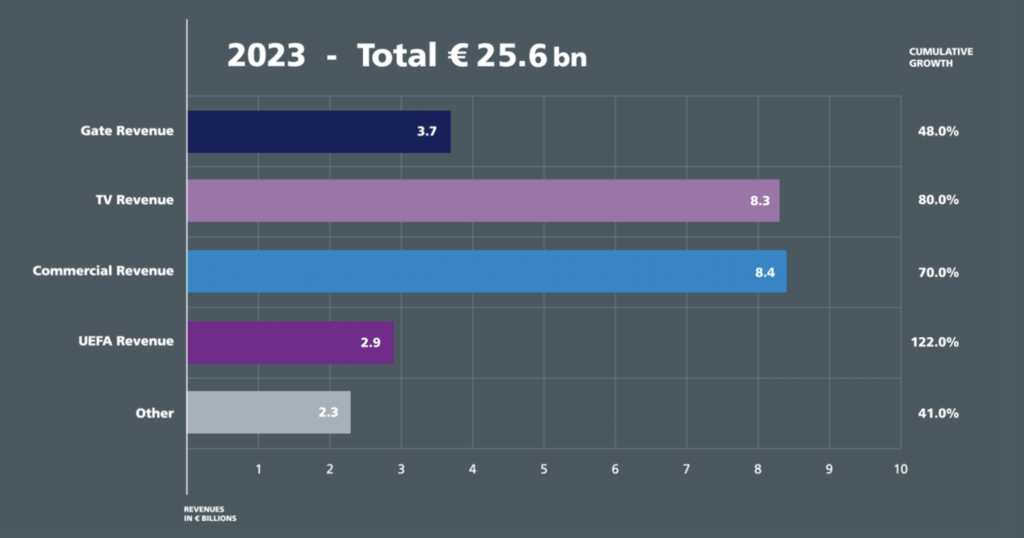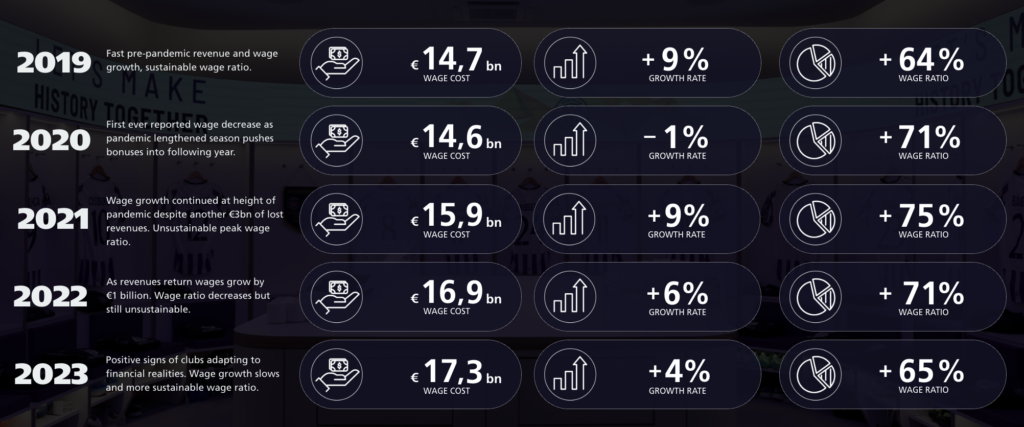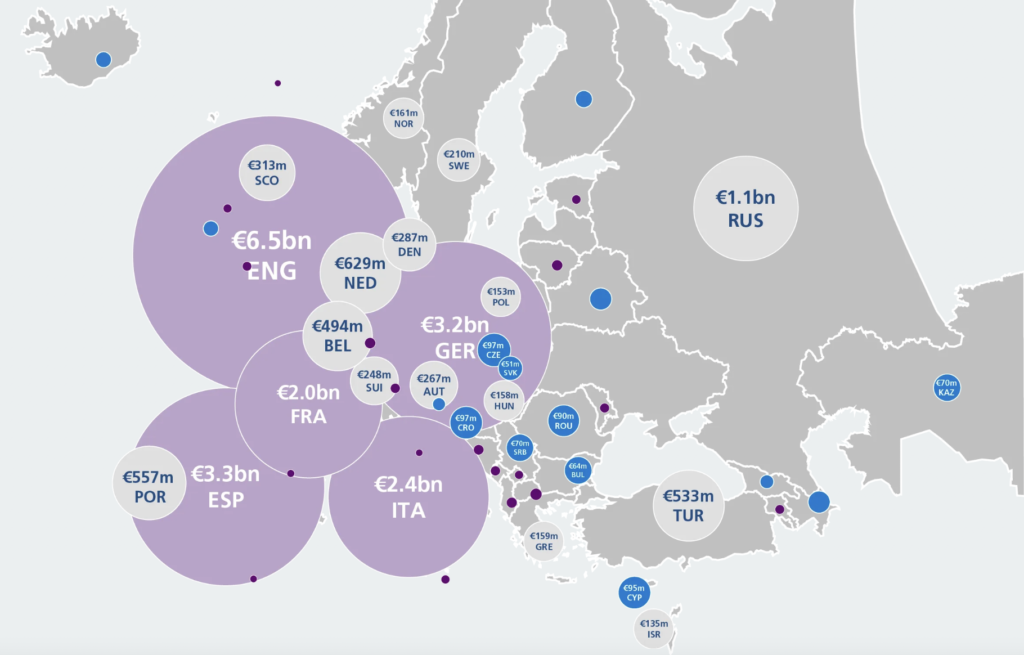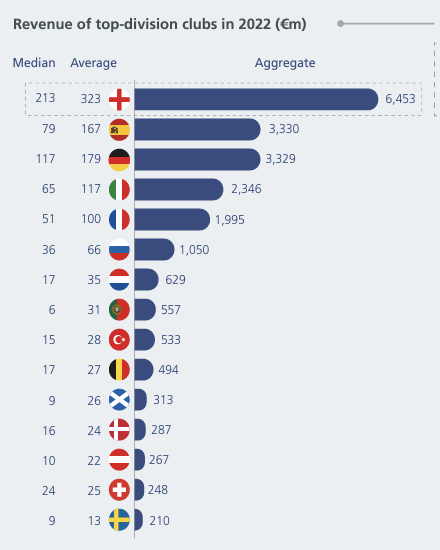February 15 – Top tier clubs in Europe have recorded aggregate revenue of just under €24 billion for the 2022 financial year, with projections that revenue will grown beyond €26 million in 2024.
Club football in Europe is booming and the growth does not seem to be capped.
European football has grown at €1 billion a year since 2013 from €15 billion, despite the global pandemic impacting the numbers in 2019, 2020 and 2021.
The figures come from the UEFA Club Licensing and Benchmark Report that analyses the finances of more than 700 clubs in UEFA’s 55 member associations.
Revenues from UEFA competitions over the past 10 years have grown 122%, domestic football TV revenues have grown80%, sponsor and commercial revenues 70%, gate revenues 48% and other non-commercial revenues by 42%.
These numbers do not include player transfer earnings, which have grown by 105% over the same period, but which are not included within club revenues.
While the numbers are impressive and the on-going growth attractive for football’s investors and employed, there is still a big gap between the haves and the have-nots.
The top 20 clubs reported a combined €11.7 billion of revenues in 2023 – a 16% increase from 2022. Even within this group there is disparity with UEFA highlight that top club Real Madrid generates about double the revenue of the 12thclub Dortmund, and three times the revenue of the 18th club Napoli SSC.
The Premier League dominates with €6.5 billion of revenue in 2022, followed by the LaLiga (€3.3 billion) and the Bundesliga (€3.2 billion). Italy’s Serie A clubs generated €2.4 billion while France’s Ligue 1 clubs weighed in with €2 billion.
While differential between the Premier League and the rest looks huge, the report highlights that looking at median aswell as average and aggregate revenues there is a different picture. The median (middle) German club generated €39 million of commercial and sponsor revenues compared to €36 million for the median English club.
German clubs generated higher average revenue (€189 million v €167 million) and median (€117 million v €79 million) revenues than Spanish clubs.
The biggest determinant of club profitability and, ultimately, solvency, is player wages. The report suggests that clubs are managing to keep wage inflation under control. In 2023 wages among early reporting clubs increased by less than 4% and player wages increased by less than 1%, the lowest growth level on record, said the report.
Wage control has meant a return to operating profitability (before transfers) in 2023 among early reporting clubs, afterthree years of operating losses. Manchester United, Napoli, Arsenal and Bayern München, all reported profits of more than €100 million with their results all in the 50 highest operating profits on record.
Looking at player costs Manchester United’s aggregate transfer fee cost of €1,422 million at the end of makes itofficially the most expensive squad ever assembled. Manchester City’s cost of €1,286 million the third mostexpensive ever. There is a lot of money in Manchester!
Chelsea, who adopted a spend, spend, spend policy, have not yet reported figures for 2023 but the reports notes they were already the 11th most expensive squad of all time at the end of 2022, before the even bigger spending had kicked in.
Contact the writer of this story at moc.l1745305365labto1745305365ofdlr1745305365owedi1745305365sni@n1745305365osloh1745305365cin.l1745305365uap1745305365





